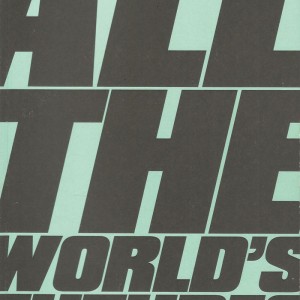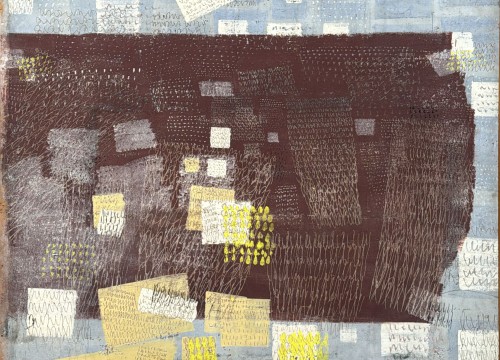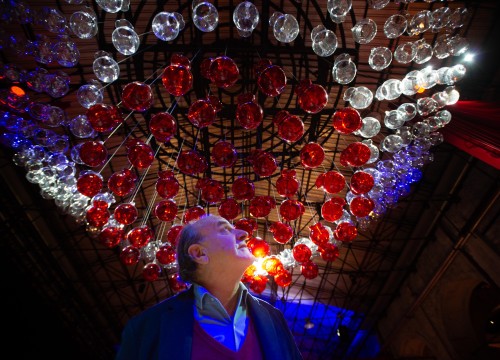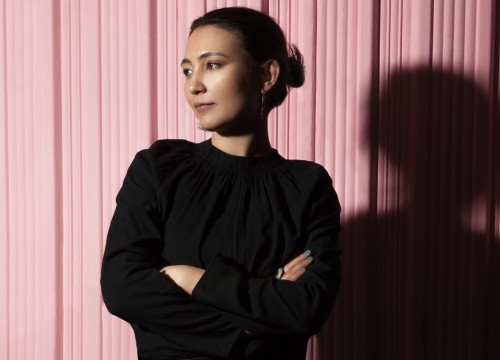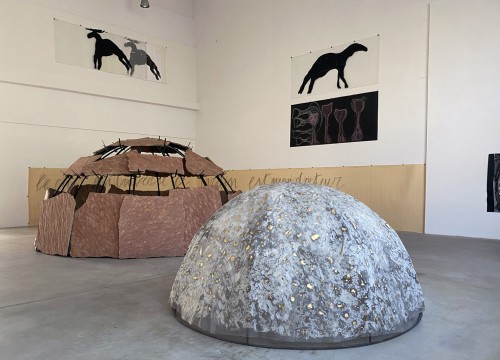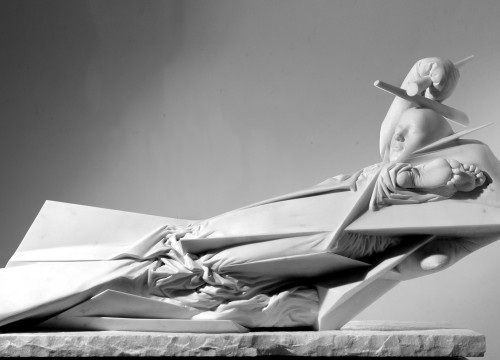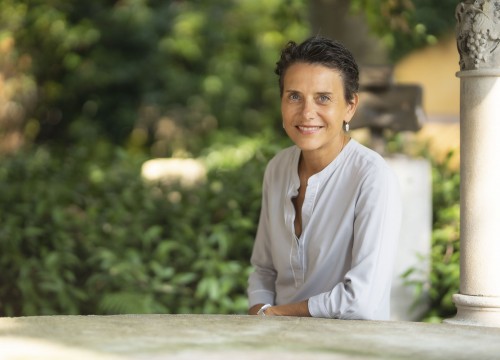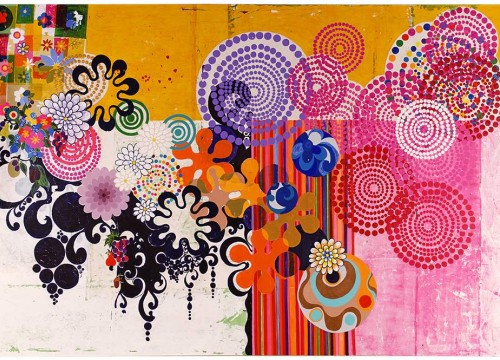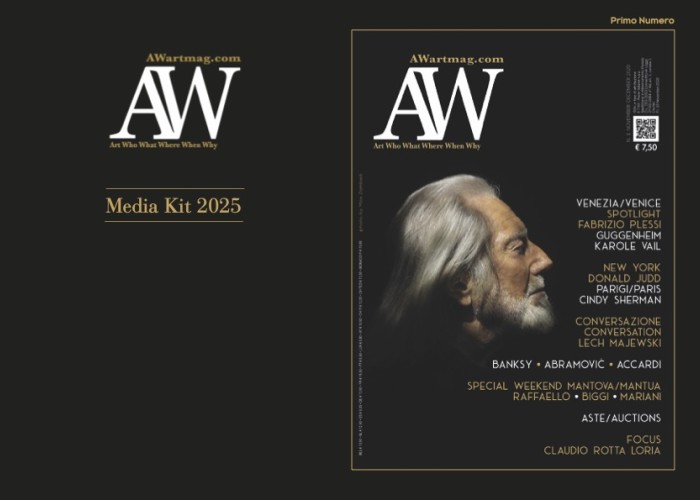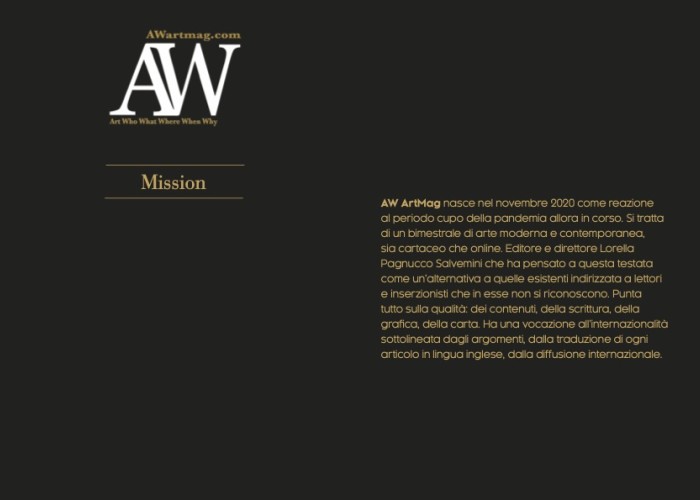The floor to Vincenzo Trione
The academic always deployed for breaking down the barriers of the various artistic genres
Even the encounters with Vincenzo Trione belong to my personal memory. He was a printed words buddy who used to paraphrase Charlie Brown and I know him and his writings since the time he wrote for “Il Mattino” in the 90s, for then moving to “Il Corriere Della Sera” (and its related magazines “Io Donna” and “Sette”) and “La Lettura”, the cultural appendix which has recently celebrated ten years of activity. We met again also at the Royal Palace of Naples, in mid- November 2003, for “Anteprima” the first show of the new and triple set-up (Turin and then Rome) of the XVI Art Quadriennale, that saw him among the five components of the Commision which was responsible for the choice of the artists, an experience which gives life to his article “Arte e Metropoli. The Merzcity”, a work published on the De Luca Editori Catalogue. He wrote about “the necessity of getting back to a ‘narrative art’”, an “archipelago without any precise borders”, “bold contaminations” and extensive confluences of the various forms of art, seeing in the attention to the city one of “the privileged reasons that have marked the development of the history of art, starting from the 19th century”, despite the change in its perspectives, until becoming the Merzcity, meaning “an open space, in which the natural and artificial elements bind thanks to movable relationships”.
FINALLY, THE SEASON OF THE BLOCKBUSTER SHOWS IS ENDING,
EXHIBITIONS INVOLVING FAMOUS ARTISTS WITH ON DISPLAY
JUST A FEW WORKS OR EVEN ANY
Trione will be always faithful to these concepts, developing them in publications like “Atlanti Merafisici.
Giorgio de Chirico: arte, architettura, critica” (Skira, 2005), “La forma della città. Immagini cinematografiche e scenari urbani” (Arte Tipografica, 2008), “Giorgio de Chirico. La città del silenzio: architettura, memoria, profezia” (Skira, 2009), “Mimmo Rotella. Anni di piombo (Abscondita, 2012), “Effetto città. Arte cinema modernità” (Bompiani, 2014) Rome Prize and Viareggio Jury Prize 2015, “Atlante dell’arte a Napoli e in Campania: 1966-2016” (Electa, 2017), “Contro le mostre” (Einaudi, 2017), written with Tomaso Montanari (a pamphlet about the blockbuster shows, some curators, assessors and museum directors) and more. Other exhibitions: “I luoghi e l’anima. Mario Sironi/Costant Permeke” (Milan, Palazzo Reale, 2005), “Valencia09: Confines: pasajes de las artes contemporaneas” (Valencia,
IVAM, 2009), “Post-classici. La ripresa dell’antico nell’arte contemporanea italiana” (Rome, Roman Forum and Palatino, 2013) e “Codice Italia”, our pavilion in the 2015 Biennale in Venice with the 19 artists involved and the video installation “Umberto Eco, sulla memoria”, as to reaffirm the necessity of being able to read inside the artwork the sense of continuity, giving the artists the ability to refer to “memory, intended as an arsenal of traces to be re-inhabited and reinterpreted”, as Marsilio writes in the catalogue.
WE MUST ACKNOWLEDGE CONTEMPORARY
CRITIC NO LONGER EXISTS AND WE ARE FACING THE DECLINE
OF THE GREAT TRADITION OF THE STUDY OF ITALIAN ART
In the same year Trione is Director of the Department in arts and media at IULM and then Principal of the Department of Art and Tourism in the same university, for then becoming coordinator of the PhD in Visual and and Media Studies: a research field that “aims to be a place of convergence for theoretical knowledges and operative strategies connected to the study of medias, visual languages and literatures” and that it would have found in “L’opera interminabile. Arte e XXI secolo” (Einaudi, 2019), Jury-Prize in Viareggio 2020, the development of his already-expressed idea, building a sort of imaginary museum in which the artworks of 15 artists, different in methods and languages, confirm how the liquid and fragmented contemporaneity is an osmotic territory that allows painting, writing, sculpture, photography, cinema, architecture, music and video, to cancel whichever limit/enclosure endlessly intersecting each other, although maintaining their rules. In 2020 “Artslife” awards him as best journalist of the year, granting him great authority, the same he exerted as Principal of the School for Cultural Heritage and Activities and in the many institutional initiatives, not the least of which the proposal, within the G20 for Culture (Rome, July 2021), to build an international net engaged in the formation for the management of the Cultural Heritage, and the direction, together with Valeria della Valle , of the brand new “Treccani Encyclopedia of Contemporary Art” that sees the light with four volumes at the end of last yeat. And today, again for Einaudi, the release of “Artivismo”, that will push me to new and wider reflections, but for now I will limit myself to the following conversation:
Five years after the publication for Einaudi of “Contro le mostre”, the pamphlet youn wrote with Tomaso Montanari, and beside the stop caused by Covid-19, has mosterism slowed down a bit?Yes, I think so. I have the feeling that we are at an important turning point. From my point of view, this is positive. The season of the blockbusters shows is finally ending, a time in which we relied on easy and popular names, for then building shows basically without artworks or just with few of them, often wastes of stock, and with very pompous installations. My impression, travelling a lot in our country, is that we are going through a phase in which we are getting back to the real shows, with important loans, worthy of world-class institutions. I’ll cite some of them: “Inferno”, the extraordinary show curated by Jean Clair at the Quirinal Stables in Rome, but also “Magical Realism” at the Royal Palace in Milan and “Corpus Domini”, also in the Royal Palace. Shows that differ from each other, clearly representing the need to get back to a dedication to the exhibition projects worthy of a truly normal country.
Why that practice of moving between memory and actuality which in 2015 – as curator of our pavilion in the 56th Biennale in Venice – characterized your “Codice Italia”, is not exerted by many of the contemporary critics?
It’s simple: contemporary criticism doesn’t exist anymore. We must accept, in my opinion with a little bit of pain, the decline of the great tradition of Italian art criticism, which is inextricably tied to the decline of the history of art. A tradition that starts with Longhi and Venturi and arrives up to Briganti, Menna, Arcangeli, Ragghianti, Argan, Barilli. Personalities which are different and far from each other, but still going in the same direction, sharing the same philosophy. This thread snapped. Today we only have mono-dimensional personalities. It prevails a curatorship without a historical memory, flattened on the present, aimed at documenting what happens inside the art system, instead of interpreting it and unveiling his roots.
What is the meaning of “enclosure” in the complex art reality of nowadays?
The enclosures exist just because they need to be demolished. Enclosures between languages don’t have any sense. Enclosure between artistic genres, as I tried to depict in my book “L’opera Interminabile”, need to be dissolved. Barriers and borders, if real, have sense only for stimulating their removal.
Don’t you think it would be appropriate to extend to all the other Italian regions the summary/ catalogation carried out with the volume “Atlante dell’arte contemporanea a Napoli e in Campania 1966 – 2016”?
A historical-critic project like this doesn’t exist in any other Italian region, a book in which we documented the artists, but also gallerists, shows and great exhibition spaces that operated in Campania from 1966 to 2016. It would be advisable to export this model elsewhere. But keep in mind the Atlas I directed, nowadays, should be integrated with digital supports. There’s a part of the database that should be deepened.
The new “Treccani Encyclopedia of Contemporary Art”, aimed at overcoming the of the Western World’s and the artists’ established centralities, giving “space to the different actors of the scene”, as you pointed put out yourself, could it possibly be an additional tool for making understand the permeability of all the possible boundaries?
Yes, absolutely. The building of this project has been almost an epic undertaking. A model of encyclopedia at an international level didn’t exist. We had to invent a format for dealing with contemporary art. You were talking about boundaries: the encyclopedia wants to tear them down. There are no more boundaries between the artists and the actors entering the art world: art historians, critics, merchants, gallerists, dealers. We wanted to transgress the geographic boundaries too. The goal of the encyclopedia is to depict reality also to the people outside the western world, going beyond a Western-centric vision and overcoming the boundaries between the languages. Inside this work in four volumes there’s not only art, there’s also art conversing with cinema, architecture, design, fashion, graphic, advertising, photography and also politics, law, and economy.
THE CURATORSHIP WITHOUT HISTORIC MEMORY PREVAILS,
LIMITED JUST TO THE PRESENT
Which kind of twist do you think the School for Cultural Heritage and Activities, that you now head in quality of president, could give, inside the more and more urgent demand for new expertise in the management and protection of the Italian cultural heritage?
Born in 2016, the School for Cultural Heritage and Activities managed to obtain a historical result and it needs to be told. For the first time in our country (on the 7th of December the competition notice was published on the Official Gazette), the School, together with the SNA (Scuola Nazionale dell’Amministrazione) will menage the first Italian contest for directors of museum, libraries, superintendencies and archives, reserved to people who earned a PhD. A Copernican revolution. New vital energy would enter our country’s public system of heritage. The School is also working on the matter of new professions. Soon, we will announce a project called “Cluster Topics”: innovative and agile courses on crucial but not-so-talked matters, designed for professionals and young people already working inside the world of art.
But today, in the internet era, what is the role of the intellectual?
I always thought the intellectual should be like the figure Erwin Panofsky described in an essay I keep on reading and examine. Inside this illuminating written work, “in defense of the ivory tower”, Panofsky praised the intellectual who is capable to look from above the sceneries of the present. It reads: “The man on the tower has the power to see and not to act, the only thing he can do is warn”. So, I think the role of the intellectual is this: to warn against what could happen and what is going to happen.



